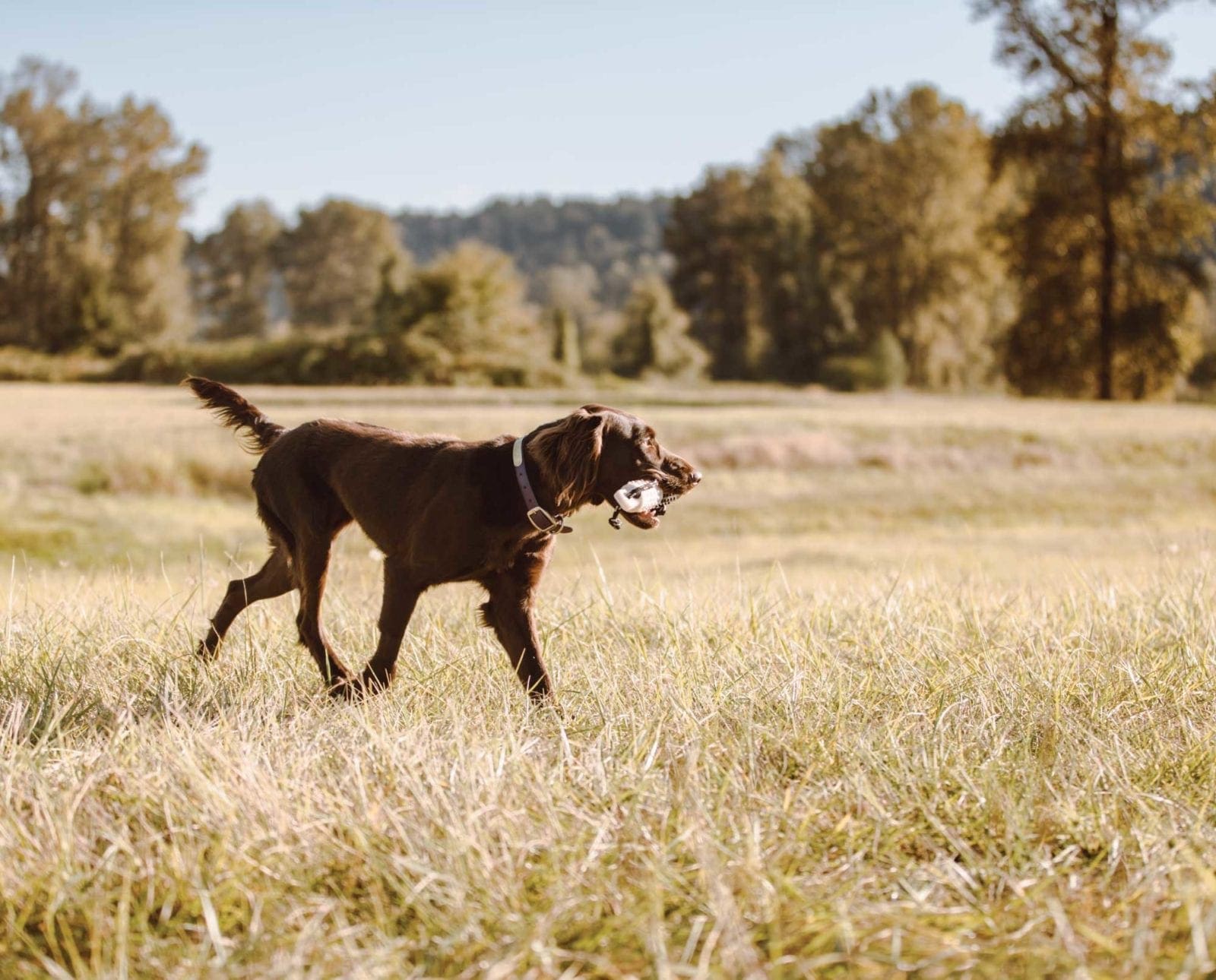Home » Hunting Dogs » German Longhaired Pointer (Deutsch Langhaar) – A Bird Hunting Dog Profile
German Longhaired Pointer (Deutsch Langhaar) – A Bird Hunting Dog Profile

Nancy Anisfield is an outdoor writer and hunting dog photographer,…
The sleek appearance and superb hunting traits of the German Longhairs and Deutsch Langhaars are gaining notice from upland bird hunters and waterfowlers alike
This series of Project Upland hunting dog breed profiles focuses on the hunting characteristics that set one breed apart from another, understanding that within a breed individual dogs may vary in temperament, conformation, instincts and abilities.
Original purpose of the German Longhaired Pointer
Much to the surprise of many German pointing dog owners, the German longhaired pointer came before the German wirehair and shorthair. As with many other continental breeds, the longhair was first bred to flush game for falconers and net hunters, but quickly transformed into a field pointer when firearms entered the picture. The breed’s standard was formalized in the late 1800s, embracing a strong drive for all aspects of hunting versatility including tracking and water work.
Coat color and quality have dictated important aspects of the breed’s identity and popularity. Way back in Germany, longhaired pointer coats could be brown, black or combinations of either with white. Believing the brown to provide better camouflage while hunting big game and a general belief that it was more attractive than black, designers of the official breed standard excluded longhairs with black coats. (Subsequently, the black breeding lines formed the large Munsterlander breed.) Coat quality initially played a role in the longhairs’ lack of popularity in the U.S. where the resistance and density of the wirehair and shorthair coats were preferred. Nonetheless, a good longhair coat that lays flat but has a thorough undercoat holds up fine in the water or in thorny brush.
Hunting style and temperament of the German Longhaired Pointer
Today, many people believe the Deutsch Langhaar (DL) and German longhaired pointer (GLP) are separate breeds. Owners of DLs generally do not refer to their dogs as GLPs. On the other hand, most GLP owners feel they are they same breed and use both names. Because GLPs cannot be bred in the Deutsch Langhaar Verband program, the lineages of the dogs continue to diverge.
Both the DL and GLP are strong gun dogs, with excellent skills before and after the shot. Staunch pointers with flowing lines, they work at a moderate range and speed. Noted for a stable temperament, DLs and GLPs are known for a strong physical presence yet calm demeanor and stable temperament. Those bred under the German breeding and testing system vocalize on track more than their American counterparts and may be more protective.
Bird hunting traits important to hunters
Size
23-27 inches in height, average 60-70 lbs.
Coat
The coat should be tight and smooth or just slightly wavy with longer hair only on the neck and chest. The tail is feathered. Brown, brown and white, and roan are all acceptable. Coat density varies; a dense undercoat is important for waterfowling and thick upland cover.
Maturity
Early point, easy to train, but a bit softer upon correction than German wirehairs or shorthairs.
Health risks
There are no specific congenital health issues associated with the breed.
Finding a good breeder
The relative lack of popularity in the U.S. has kept the German longhairs strong in hunting instincts and traits. Breeders can be found through the Deutsch Langhaar – Gruppe Nordamerika or German Longhaired Pointer Club of America.
Nancy Anisfield is an outdoor writer and hunting dog photographer, creative director for the Ugly Dog Hunting Company, member of the Pheasants Forever / Quail Forever Board of Directors, and co-owner of the Track2Wing Project which grants Action trackchairs to individuals with mobility challenges who want to train and hunt with bird dogs. She and her husband live in Hinesburg, Vermont, where their lives are governed by her two German shorthaired pointers and his two German wirehaired pointers.





Great litter available right now – Cortney Shaefer in Nebraska.
A few Deutsch Langhaar pups are currently available to good hunting homes in Westchester, WI thru Troy Holweck and Hunter’s Shadow kennel. This litter was bred for high drive dogs with natural field and water ability. You can contact Troy and find out more about Deutsch Langhaars thru dl-gna.org
For more information on the breed, including the FCI breed standard, see https://www.dl-gna.org/about-dls. Do feel free to prowl the website, or find the group on facebook. Like the dogs, owners and breeders are very approachable should you wish to know more.
From the FCI standard linked on the linked page above, I would offer the following text regarding the coat. (BTW, the ‘leathers’ mentioned are the ears, it’s an oddity of translation.)
COAT
HAIR: The greatest importance is attached to correct coat, neither excessive growth nor too short hair. On back and sides of body: Hair 3 – 5 cm, close fitting. On underside of neck, on chest and belly, coat may be longer.
• Belly: Well coated.
• Leathers: Hair wavy and feathered.
• Tail: With good plume, coated to tip.
• Back of front legs: Feathered.
• Back of hind legs: Feathered, forming breeches.
• Below hock: Hair significantly shorter. Too much feathering is not desired. Dense short hair between toes.
• Head: Hair much shorter, but all the same, longer than on a shorthaired German Pointing Dog. Topknot not desired.
• On body: Hair is sleek, firm, smooth or slightly wavy, close fitting. Dense with good undercoat.